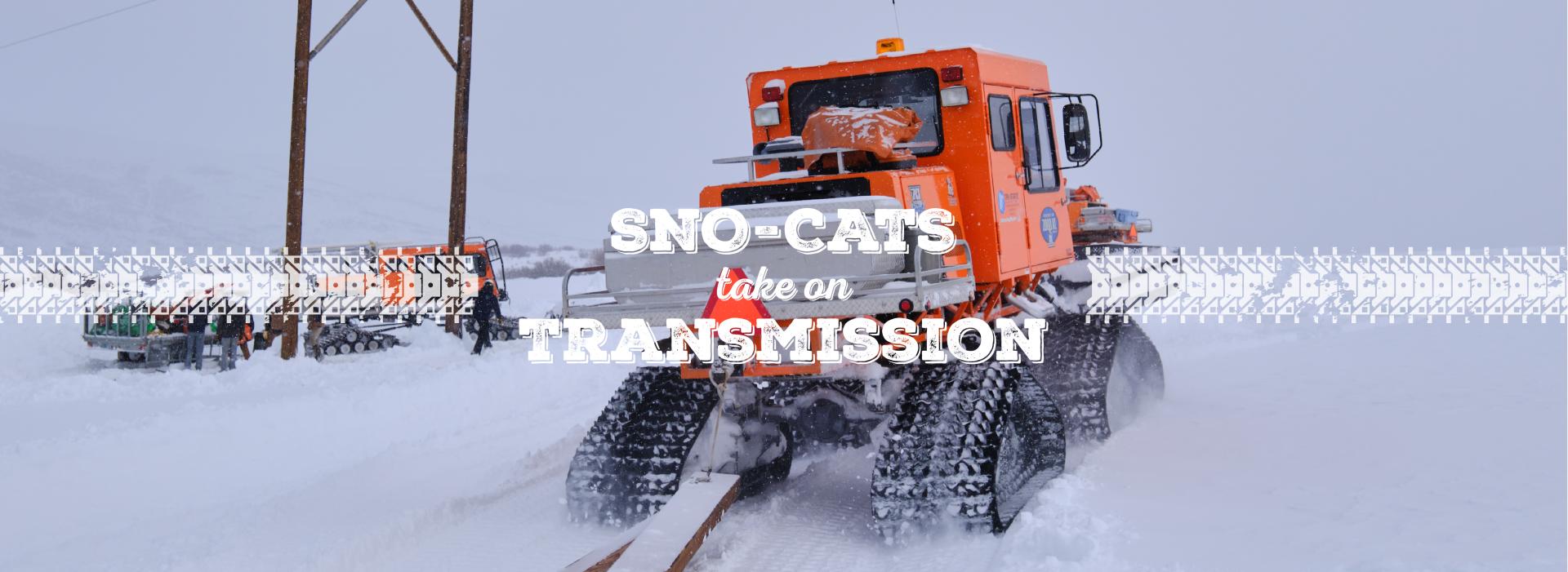
03/29/2023
Sno-Cats Take on Transmission Line Maintenance
Repairing a transmission structure is a huge task even on a warm, sunny day with little wind. Lineworkers climb poles anywhere from 20 to 120 feet tall while carrying up to 50 pounds of equipment. Sometimes Tri-State linemen can work the lines de-energized, but there are situations where lines cannot be taken out of service and they must work directly in contact with energized wires.
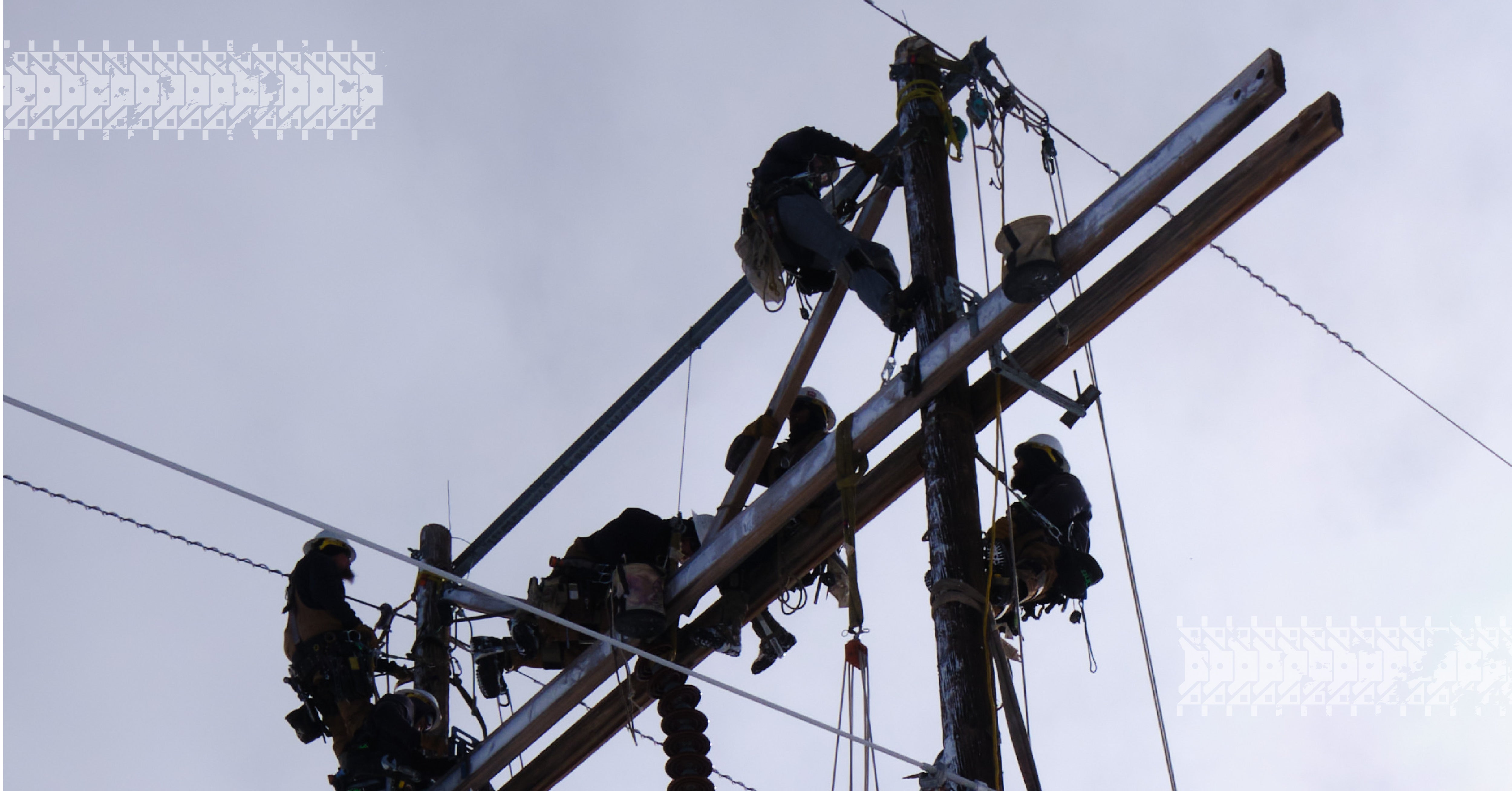
Lineworkers Face Many Challenges
Maintaining Tri-State’s 5,700 miles of lines, more than 400 substations and telecommunications facilities are a year-round job that requires hundreds of employees working around the clock. Whether it’s raining, snowing or below zero, Tri-State transmission maintenance crews get to work when a repair is needed. Most will tell you they knew working in adverse conditions would be part of the job. It doesn’t make it any easier, but it’s expected. It’s the unexpected challenges that keep them on their toes.
A decade ago, Tri-State crews were struggling to keep up with maintenance across Colorado’s western slope, an area notorious for receiving heavy snow. This region covers Rifle to Hayden, Colorado and is home to two of the largest elk herds in the United States, making it a hot spot for hunters. Between monsoon season in July and August and hunting season in the fall, line crews had a short window in the summer to safely get into the area for maintenance. They had over a hundred structures in the area that were in dire need of repair and desperately needed the flexibility to work during the winter months.
Around 2011, the former senior manager challenged the Transmission Maintenance West team to figure out a way to respond to outages and conduct critical maintenance work year-round. They decided to incorporate a Tucker Sno-Cat® into line maintenance activities in the winter of 2011-2012.
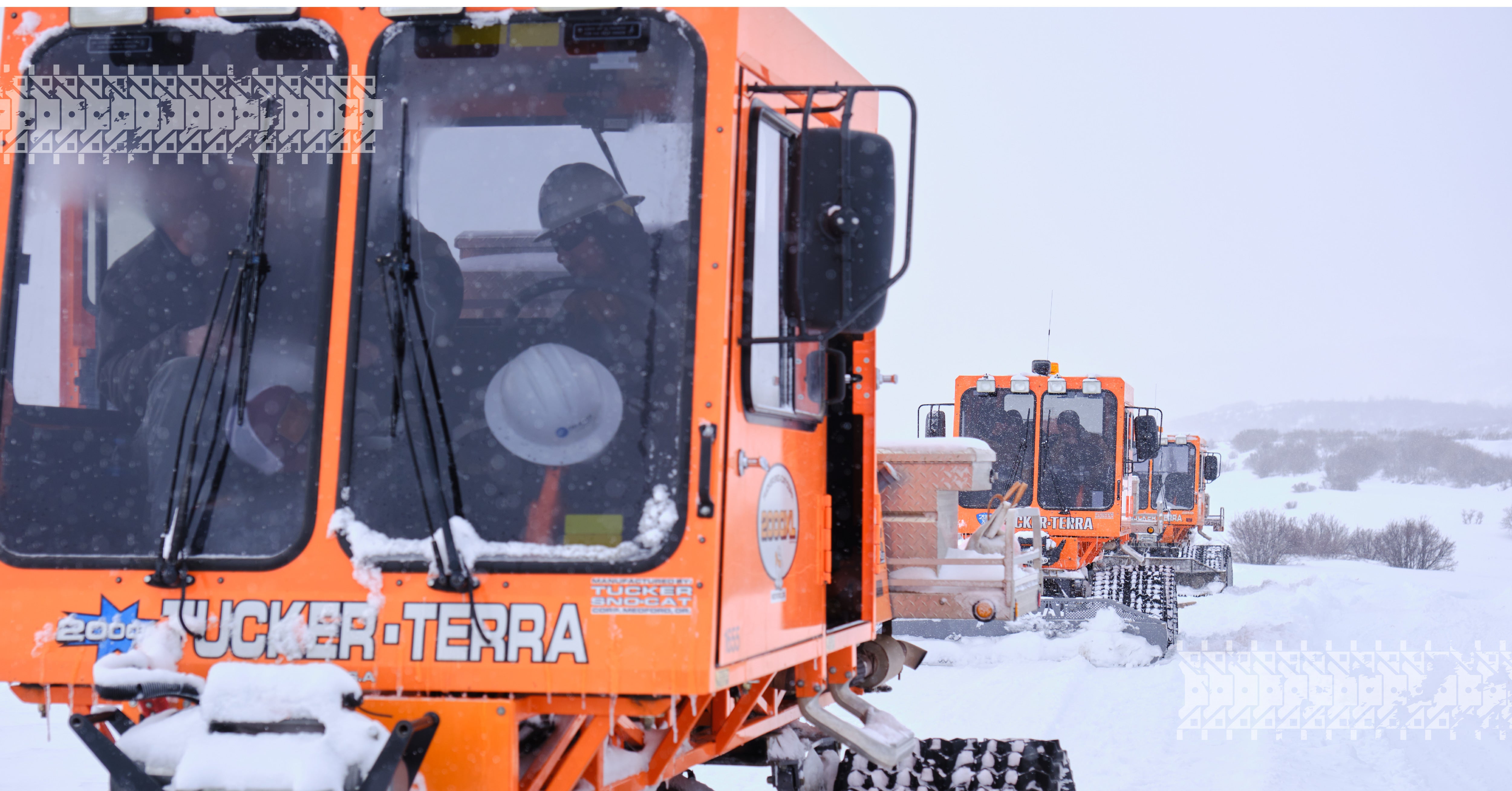
Introducing the Sno-Cat to the Maintenance Program
At that time, linemen had access to a Sno-Cat for emergency situations, but it belonged to Tri-State’s Communications group that used the machine for transportation to their mountaintop sites. Line crews began using the Sno-Cat, or “cat” as they call it, more frequently. They used it to access lines, haul materials, and plow snow away from the poles so they weren’t working in waist-high snow. Eventually, they were putting 10 times the hours on the cat than the communications group and were able to purchase their own for line work. At 20,000 pounds, it’s Tucker’s largest Sno-Cat.
“It’s a monster,” joked Linemen Maintenance Supervisor Brad Hauger.
A few years later, the Craig Line Crew was formed. Under the supervision of Tom Penner, the Sno-Cat Maintenance Program was pushed to an even higher level. Coupling the Linetrac® with the Sno-Cats to get even more aggressive work done, such as replacing poles and working on dead-end structures.
Like any new technique, determining the most effective and safe way to use the cat required trial and error. “Safety is always at the forefront of what we do,” Brad explained. “The safety of employees, contractors and the communities we serve is a core value at Tri-State.”
Weather on Colorado’s western slope is known to change in a matter of minutes and can quickly become dangerous. Tri-State line crews identified that working in the winter months would expose linemen to extreme winter conditions and safety procedures were implemented to address this potential concern. Fortunately, the cat also serves as an excellent shelter in these moments and line crews have used them to safely retreat from hazardous weather conditions.
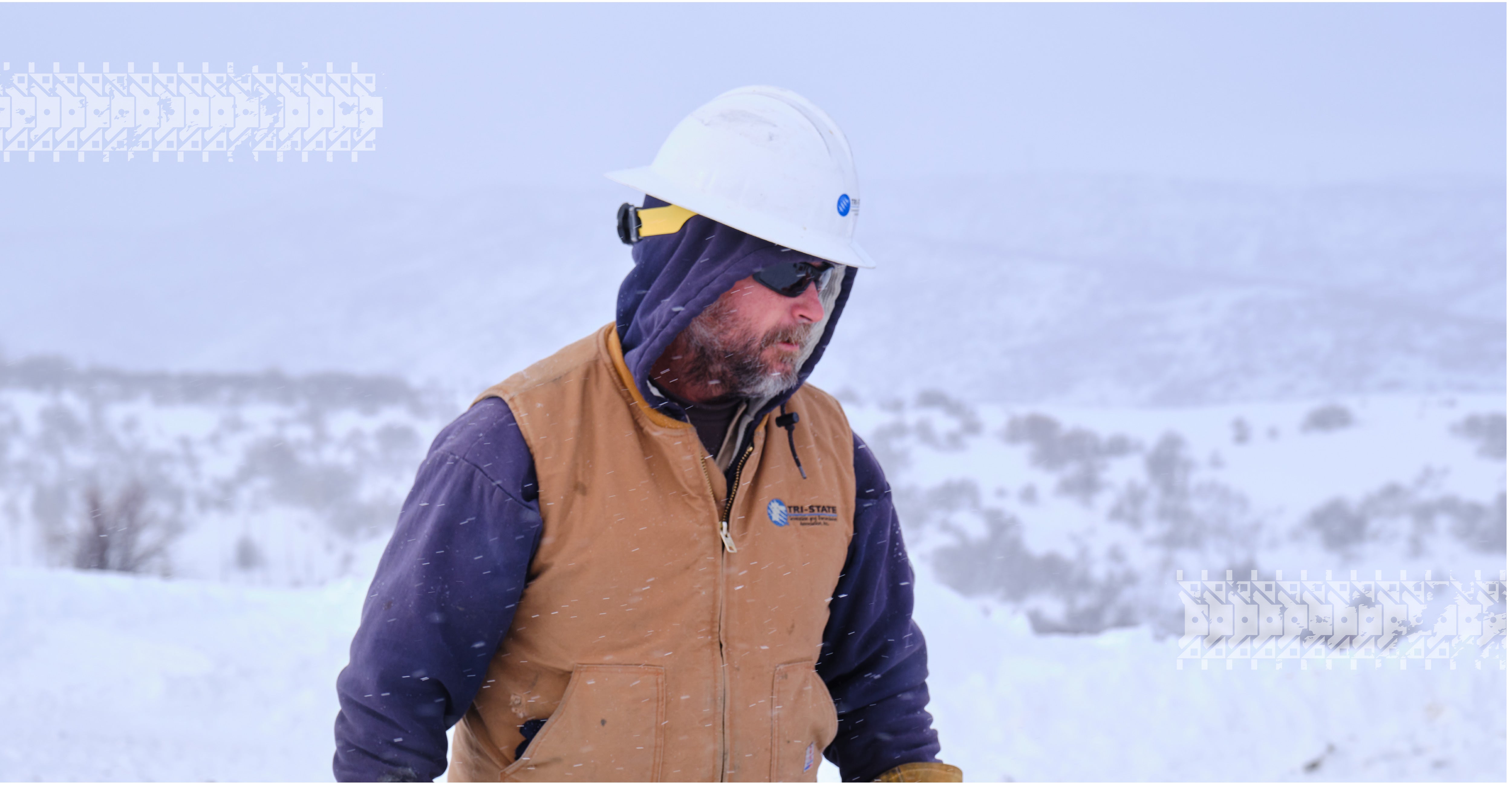
Since incorporating the Sno-Cat into their maintenance activities, they can safely work through the winter months to repair hundreds of damaged structures. Access to Tri-State’s most challenging terrain is a massive win for maintaining electric reliability.
Unexpected Benefits Really Pay Off
There have been other unexpected benefits along the way. Tri-State believes it’s critical to be good stewards of the public and private lands on which we operate. The use of the Sno-Cat allows maintenance to travel over the ground surface, which virtually eliminates the need to create and maintain access roads, as well as create structure pads. Work can be conducted within authorized rights-of-way to minimize impacts to soil, vegetation, and agricultural land uses. Tri-State has spent thousands of dollars each year to restore properties where ground disturbance was required to safely access the transmission line. With snow coverage, lineworkers can use the cat to complete the same work with minimal to no disturbance.
In 2017, this technology came in handy to help reach a Hinsdale County communications tower that went dark at 12,305ft in Montrose, Colorado. The solar battery pack providing energy to the station had drained and there was a problem with the backup generator. The tower is critical for emergency service response and serves a 30-mile radius for calls including Colorado State Patrol, CDOT snowplows and other first responders in Hinsdale, Gunnison and Mineral Counties.
With an urgent need to replace the drained batteries, Hinsdale County appealed to its neighboring counties Gunnison and Montrose for workers and equipment to assist them. The county emergency managers pulled in Tri-State to help reach the high-altitude station.
Tri-State’s Sno-Cat broke the trail to the tower site through six feet of snow, followed by Hinsdale and Gunnison County snow cats and snowmobiles. With multiple trips up and down the mountain over two days, the teams were able to successfully install new solar batteries at the station, repair the generator and restore service to the communications tower.
Strong interagency relationships and a coordinated approach resulted in a safe and successful outcome.
Sno-Cat Mitigates Wildlife Disturbances
Transmission Maintenance and Environmental work together to ensure minimal disturbance to wildlife during maintenance activities. Line crews coordinate projects with the Bureau of Land Management, U.S. Forest Service, and private landowners to minimize impact. Examples of this include driving slowly on the transmission right-of-way and stopping Sno-Cat work whenever herds are spotted in the distance to allow them to pass without disturbing their movements.
Tri-State is required to comply with the Migratory Bird Treaty Act and the Bald and Golden Eagle Protection Act for maintenance activities, which essentially requires us to avoid impacts to nesting birds on or in proximity to our lines. Diana Leiker with Transmission Environmental indicated that winter maintenance allows crews to work outside of the nesting season for most birds in our service territory. Bald and golden eagles will begin nesting as early as January, so maintenance works with Environmental to avoid any active eagle nests during winter repairs.
Working Year-Round to Ensure Electric Reliability
Using the Sno-Cat has been monumental for the line crews in Colorado’s Mountain West region. There are many obstacles, including land use and environmental restrictions, that line crews must work around to complete critical maintenance projects. The ability to work year-round ensures we maintain electric reliability for our members.
Brad has been with Tri-State for nearly 19 years and has seen a lot of changes in that time to improve the way we maintain our lines, including the introduction of the Sno-Cat. One thing that remains the same is the lineworker’s commitment to the job.
Tri-State Journeyman Lineman Germain Toll said it best, “Lineworkers are a key part of the transmission system. From building it to maintaining it, we keep the lights on.”
Tri-State thanks the many lineworkers who labor tirelessly to power our communities. Be sure to #thankalineworker during Lineworker Appreciation Day on Tuesday, April 11. A day to honor the people who make up our Transmission Maintenance staff, which includes over 240 lineworkers and substation, construction, and telecommunication technicians.
--
About Tri-State
Tri-State is a power supply cooperative, operating on a not-for-profit basis, serving electric distribution cooperatives and public power district member-owners in four states. Together with our members, we deliver reliable, affordable and responsible power to more than a million electricity consumers across nearly 200,000 square miles of the West. Visit www.tristate.coop.
Blog Posts

Common Summer Electrical Problems to Avoid

Outdoor Cooking with Electric Grills

Earth Day 2021 Energy Saving Tips
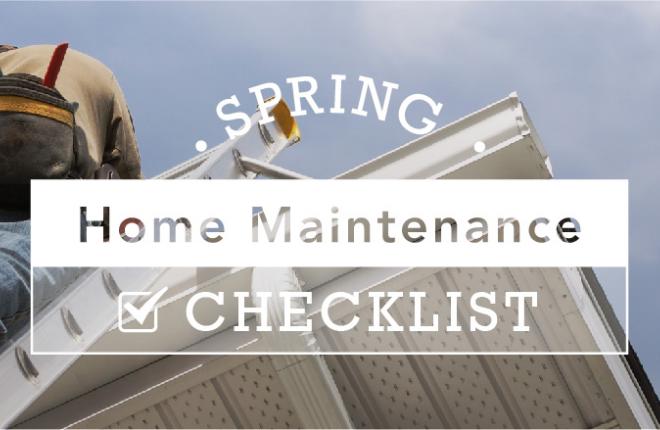
Home Maintenance Checklist for Spring

The Surge of Electric Vehicles in 2021

Spring Road Trip Tips in Your EV

Electric Vehicles in Colorado: How Tri-State is Helping Members Transition

Electric Trucks May Be the Future for The Rockies

